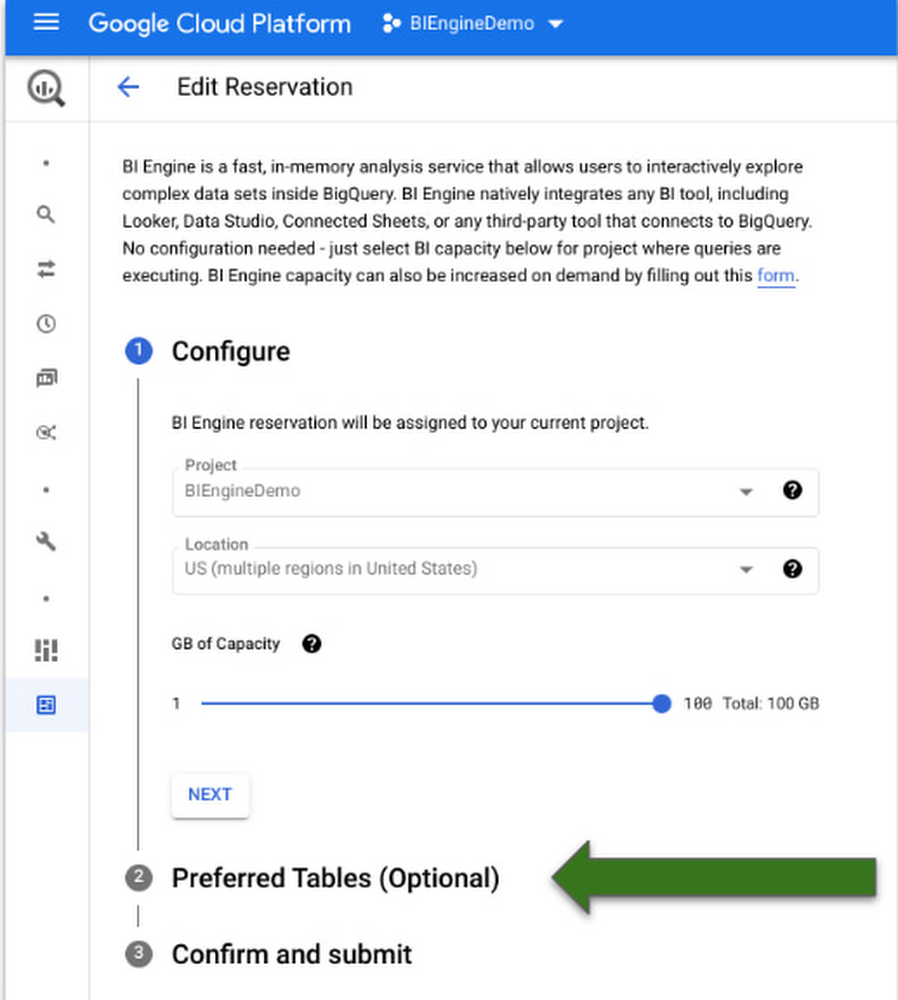Earlier in the quarter we had announced that BigQuery BI Engine support for all BI and custom applications was generally available. Today we are excited to announce the preview launch of Preferred Tables support in BigQuery BI Engine! BI Engine is an in-memory analysis service that helps customers get low latency performance for their queries across all BI tools that connect to BigQuery. With support for preferred tables, BigQuery customers now have the ability to prioritize specific tables for acceleration, achieving predictable performance and optimized use of their BI Engine resources. BigQuery BI Engine is designed to help deliver freshest insights without having to sacrifice the performance of their queries by accelerating their most popular dashboards and reports. It provides intelligent scaling and ease of configuration where customers do not have to worry about any changes to their BI tools or in the way they interact with BigQuery. They simply have to create a project level memory reservation. BigQuery BI Engine’s smart caching algorithm ensures that the data that tends to get queried often is in memory for faster response times. BI Engine also creates replicas of the data being queried to support concurrent access, this is based on the query patterns and does not require manual tuning from the administrator. However, some workloads are more latency sensitive than others. Customers would therefore want more control of the tables to be accelerated within a project to ensure reliable performance and better utilization of their BI Engine reservations. Before this feature, BigQuery BI Engine customers could achieve this by using separate projects for only those tables that need acceleration. However, that requires additional configuration and not the best reason to use separate projects.With the launch of preferred tables in BI Engine, you can now tell BI Engine which tables should be accelerated. For example, if you have two types of tables being queried from your project. The first being a set of pre-aggregated or dimension tables that get queried by dashboards for executive reporting and the other representing all tables used for ad hoc analysis. You can now ensure that your reporting dashboards get predictable performance by configuring them as ‘preferred tables’ in the BigQuery project. That way, other workloads from the same project will not consume memory required for interactive use-cases. Getting startedTo use preferred tables, you can use cloud console, BigQuery Reservation API or a data definition language (DDL) statement in SQL. We will show the UI experience below. You can look at detailed documentation of the preview feature here. You can simply edit existing BI Engine configuration in the project. You will see an optional step of specifying the preferred tables, followed by a box to specify the tables you want to set as preferred.The next step is to confirm and submit the configuration and you will be ready to go! Alternatively, you can also achieve this by issuing a DDL statement in SQL editor as follows:code_block[StructValue([(u’code’, u’ALTER BI_CAPACITY `<PROJECT_ID>.region-<REGION>.default`rnSET OPTIONS(rn size_gb = 100,rn preferred_tables = [“bienginedemo.faadata.faadata1″]);’), (u’language’, u”), (u’caption’, <wagtail.wagtailcore.rich_text.RichText object at 0x3e3bfa4a22d0>)])]This feature is available in all regions today and rolled out to all BigQuery customers. Please give it a spin!Related ArticleLearn how BI Engine enhances BigQuery query performanceThis blog explains how BI Engine enhances BigQuery query performance, different modes in BI engine and its monitoring.Read Article
Quelle: Google Cloud Platform

Published by